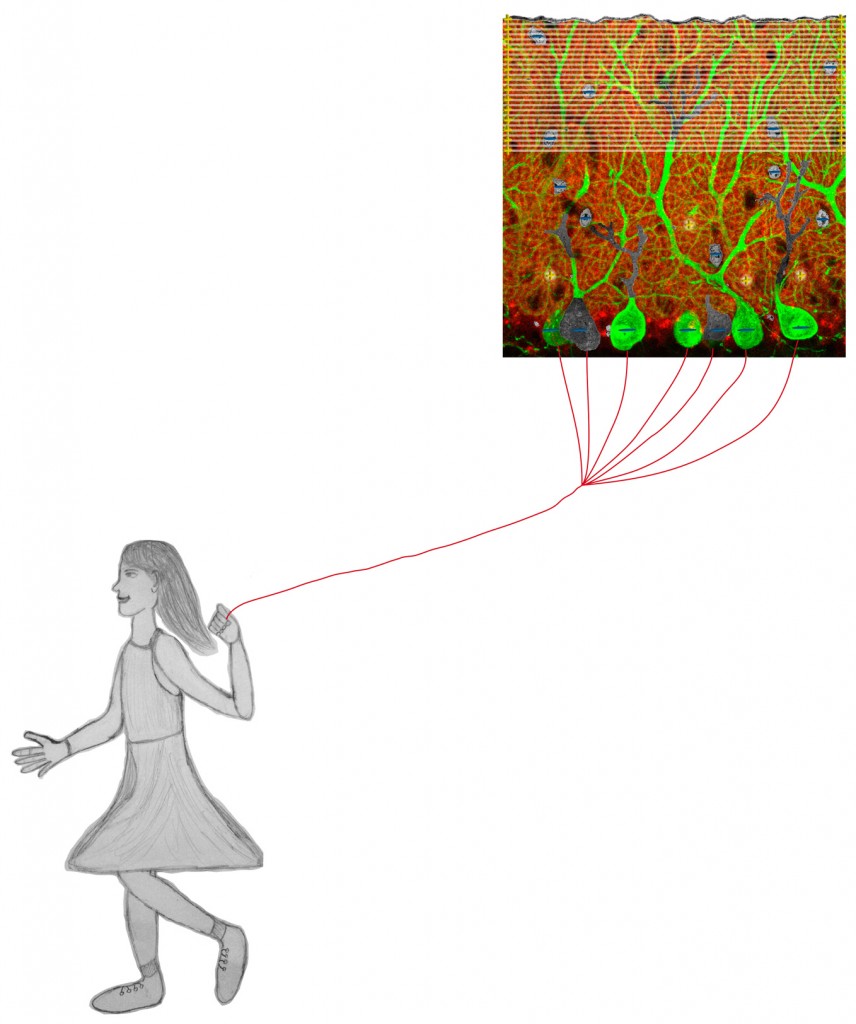I combined fluorescence and electron microscopy (EM) and graphic design tools with a simple drawing to show the beauty and complexity of the microcircuits in the molecular layer (ML) of the cerebellum. The interplay of all components is essential for coordination and fine tuning of movement sequences. The Purkinje cell (PC, green, EM) is the only neuron in the cerebellum which sends signals (inhibitory, blue minus) out of the cerebellar cortex to forward information to the motoric centers of the brain. The dendritic tree extends all the way to the pia (EM at the top). The PC receives glutametergic input from parallel (yellow plus) and climbing fibers (yellow plus in circuit). One climbing fiber excites one PC at the soma and the proximal dendrites with around 500 synapses. The excitatory input is powerful. Up to 200 granule cells send their parallel fibers to the distal parts of the dendritic tree to form thousands of synapses with the PC. The excitatory effect is despite this high number relatively weak. Parallel fibers and PCs are also interconnected with inhibitory interneurons (EM, “black holes”). Bergmann glia cells (red soma), the cerebellar astrocytes, tightly enwrap the synapses in the ML with their processes and express a variety of receptors, like AMPA receptors (red dots). They are able to sense and modulate synaptic transmission at the PC synapses as well. The running girl holds the axons of PCs in her hand dragging the cerebellar segment behind like a balloon.
The Neuro Bureau
neuro-collaboration in action

